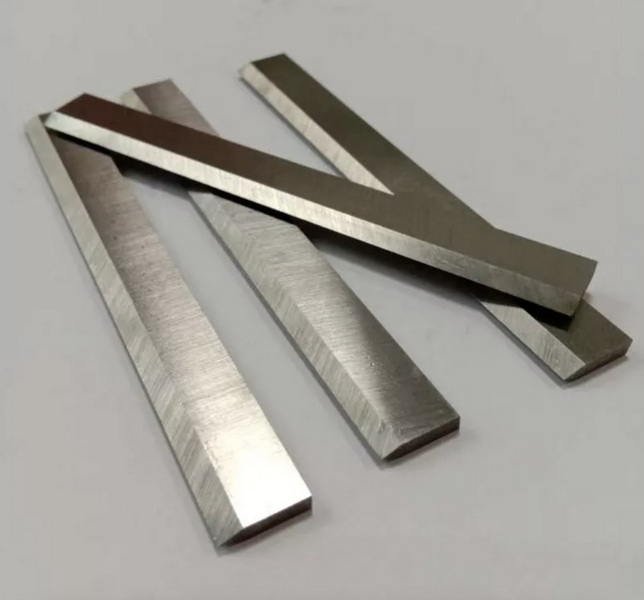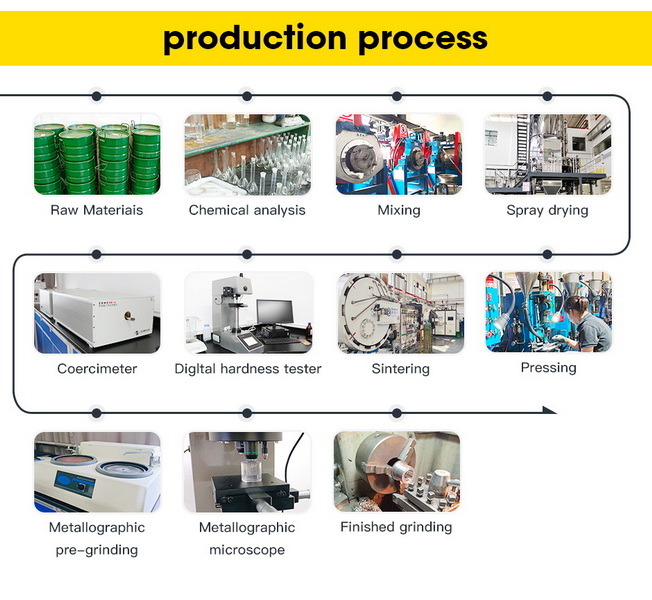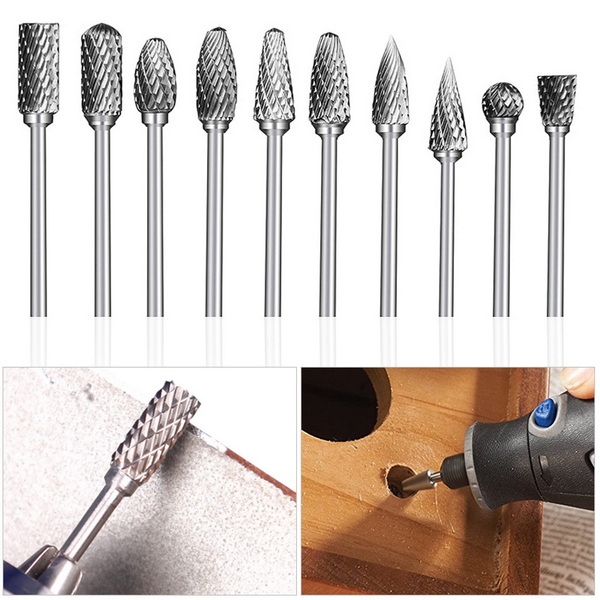Content Menu
● Introduction to Tungsten Carbide
>> Properties of Tungsten Carbide
● Manufacturing Process of Tungsten Carbide Products
>> 1. Mixing of Tungsten and Carbon
>> 2. Carburization
>> 3. Grinding and Sieving
>> 4. Mixing with Binder
>> 5. Pressing and Sintering
>> 6. Machining and Finishing
● Applications of Tungsten Carbide Products
● Advances in Tungsten Carbide Technology
● Environmental and Safety Considerations
● Conclusion
● FAQ
>> 1. What is Tungsten Carbide Used For?
>> 2. How is Tungsten Carbide Made?
>> 3. What are the Properties of Tungsten Carbide?
>> 4. Can Tungsten Carbide be Machined?
>> 5. Is Tungsten Carbide Toxic?
● Citations:
Tungsten carbide products are renowned for their exceptional hardness and durability, making them indispensable in various industrial applications. The manufacturing process of these products involves a combination of advanced technologies and precise craftsmanship. This article will delve into the detailed steps involved in producing tungsten carbide products, highlighting their unique properties and applications.

Introduction to Tungsten Carbide
Tungsten carbide is a composite material primarily composed of tungsten carbide (WC) particles bound together by a metallic binder, typically cobalt (Co). This composition provides tungsten carbide with its remarkable wear resistance and mechanical strength, making it ideal for cutting tools, wear parts, and other high-performance applications.
Properties of Tungsten Carbide
- Hardness: Tungsten carbide is one of the hardest substances known, with a Mohs hardness of about 8-9, which is close to diamond.
- Density: It has a high density, typically around 14-15 g/cm³, depending on the composition.
- Thermal Conductivity: Tungsten carbide exhibits good thermal conductivity, which helps in dissipating heat during high-speed machining operations.
Manufacturing Process of Tungsten Carbide Products
The production of tungsten carbide products involves several key steps:
1. Mixing of Tungsten and Carbon
The process begins with mixing tungsten powder with carbon black in a ball mill. This step is crucial for achieving a uniform mixture, as any stratification can lead to inconsistent properties in the final product. The mixing time typically ranges from 2 to 4 hours.
2. Carburization
After mixing, the tungsten-carbon mixture undergoes carburization in a graphite furnace at high temperatures (typically between 1300°C and 1600°C). This process converts the tungsten into tungsten carbide (WC). The temperature and duration of carburization depend on the desired particle size and properties of the final product.
3. Grinding and Sieving
Following carburization, the tungsten carbide powder is ground into finer particles and then sieved to achieve uniform particle sizes. This step is essential for ensuring consistent properties across the product.
4. Mixing with Binder
The tungsten carbide powder is then mixed with a metallic binder, usually cobalt, to enhance its toughness and facilitate sintering. The choice of binder can affect the final properties of the product, such as its strength and wear resistance.
5. Pressing and Sintering
The mixed powder is compacted into the desired shape using a press. The compacted form is then sintered at high temperatures (around 1500°C to 1600°C) to fuse the particles together, forming a dense and homogeneous structure. Sintering is a critical step that determines the final density and mechanical properties of the tungsten carbide product.
6. Machining and Finishing
For products with complex geometries, additional machining processes such as grinding, EDM (Electrical Discharge Machining), or CNC machining may be employed to achieve precise dimensions and surface finishes. These processes require specialized equipment and expertise due to the hardness of tungsten carbide.

Applications of Tungsten Carbide Products
Tungsten carbide products are widely used in various industries due to their exceptional wear resistance and hardness:
- Cutting Tools: Tungsten carbide inserts are used in machining tools for cutting metals, wood, and other materials. They are particularly effective in high-speed machining operations where tool life is critical.
- Wear Parts: Used in components subject to high wear, such as nozzles and seals. Tungsten carbide's ability to withstand abrasive environments makes it ideal for these applications.
- Mining and Construction: Tungsten carbide tipped drill bits are used for drilling through hard rock and concrete. Their durability extends the lifespan of drilling equipment and improves drilling efficiency.
Advances in Tungsten Carbide Technology
Recent advancements in tungsten carbide technology have focused on improving its properties and expanding its applications:
- Nanostructured Tungsten Carbide: Research into nanostructured tungsten carbide has shown potential for enhanced mechanical properties and improved wear resistance.
- Coatings and Surface Treatments: Applying coatings or surface treatments to tungsten carbide products can further enhance their performance by reducing friction and improving corrosion resistance.
Environmental and Safety Considerations
The production and use of tungsten carbide products involve environmental and safety considerations:
- Raw Material Sourcing: Ensuring that tungsten is sourced responsibly is crucial, as some mining practices have raised environmental and ethical concerns.
- Handling and Disposal: Tungsten carbide itself is not toxic, but the process of manufacturing and handling it can involve hazardous materials. Proper safety precautions should be taken when working with tungsten carbide products.
Conclusion
The manufacturing of tungsten carbide products involves a sophisticated process that requires precise control over each step to ensure the desired properties are achieved. From mixing and carburization to sintering and machining, each stage plays a critical role in producing high-quality tungsten carbide products that meet the demands of various industrial applications.

FAQ
1. What is Tungsten Carbide Used For?
Tungsten carbide is primarily used in cutting tools, wear parts, and other applications where high hardness and wear resistance are required. Its applications include machining tools, mining equipment, and construction tools.
2. How is Tungsten Carbide Made?
Tungsten carbide is made by mixing tungsten powder with carbon, followed by carburization at high temperatures. The resulting tungsten carbide powder is then mixed with a binder and sintered to form a dense composite material.
3. What are the Properties of Tungsten Carbide?
Tungsten carbide is known for its exceptional hardness, high density, and good thermal conductivity. These properties make it ideal for applications requiring high wear resistance and durability.
4. Can Tungsten Carbide be Machined?
Yes, tungsten carbide can be machined using specialized techniques such as EDM, CNC machining, and grinding. These processes allow for precise shaping and finishing of tungsten carbide products.
5. Is Tungsten Carbide Toxic?
Tungsten carbide itself is not toxic, but the process of manufacturing and handling it can involve hazardous materials. Proper safety precautions should be taken when working with tungsten carbide products.
Citations:
[1] https://heegermaterials.com/blog/90_how-is-tungsten-carbide-made-.html
[2] https://www.alamy.com/stock-photo/tungsten-carbide.html
[3] https://www.editing.tw/blog/structure/%E5%AD%B8%E8%A1%93%E6%9C%9F%E5%88%8A%E6%8A%95%E7%A8%BFtechnical-note%E7%9A%84%E6%84%8F%E6%80%9D-%E7%B5%90%E6%A7%8B%E5%8F%8A%E5%AF%AB%E4%BD%9C%E6%96%B9%E6%B3%95.html
[4] https://www.kovametalli-in.com/manufacturing.html
[5] https://create.vista.com/photos/tungsten-carbide/
[6] https://www.editing.tw/blog/publish/%E8%8B%B1%E6%96%87%E8%AB%96%E6%96%87%E4%B8%AD%E9%80%8F%E9%81%8E%E4%B8%89%E6%98%8E%E6%B2%BB%E5%BC%95%E7%94%A8%E6%B3%95-quotation-sandwich-%E6%AD%A3%E7%A2%BA%E5%9C%B0%E5%BC%95%E7%94%A8%E6%96%87%E7%8D%BB.html
[7] https://repository.up.ac.za/bitstream/handle/2263/24896/03chapter3.pdf?sequence=4
[8] https://stock.adobe.com/search?k=tungsten+carbide
[9] https://www.carbide-products.com/blog/how-tungsten-carbide-parts-made/
















